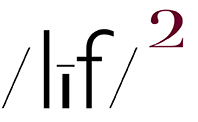all photos (embiggenable)
ON MY AM CRUISE OF THE WEB, PHOTO SITES WISE, I came across a site with an entry that, on my first glance, caused me to think, this guy is yet another how-to-make-better-photographs guru doling out exceptionally idiotic advice. But, then I took breath, dialed down my over-reactive boiling point and decided it would be best to address his advice from a more even tempered point of view….
…. the advice which got my knickers in a twist was that picture makers should show less in order to show more. Essentially a take on the well worn adage of “simplify”. Ya know, cuz, in his words, “the more you put in the frame (or fail to exclude), the less impact any one element has, and soon it’s a photograph that isn’t really about anything specific…. because busy photographs are exhausting to read…. because what we do not exclude dilutes the power of what we include…. I need you to simplify.”
So, to be unremittingly uncharitable, it sounds to me that this guy is a rather simple-minded twit. Ya know, maybe he can’t walk and chew gum at the same time. But wait, here’s where I get a bit charitable….
…. it is quite obvious that, upon viewing his photographs in the entry, he is, like the preponderance of most “serious” amateur picture makers, literal referent oriented / biased. That is to write that people-places-things is their raison d'etre for making a photograph. Consequently (and to be kinda kind), I guess his advice is on-the-money for the room.
That written, this advice reminds me of an idea I have mentioned before; there are 2 kinds of art, Fine Art and Decorative Art. And, according to the authors of Einsein’s Space and Van Gogh’s Sky (from where this idea originates) Fine Art turns on the brain whereas Decorative Art turns off the brain. Or, to put it another way, Fine Art is meant invigorate / challenge the senses, whereas Decorative Art is meant to relax / sooth the senses. Or, yet another way to explain it, Fine Art can instigate a multi-dimentional experience where as Decorative Art promotes a singular experience, aka: a simple experience.
Therefore, iMo, whether he realizes it or not, this “guru” is advocating for his followers to make pictures which are decorative rather than fine. So, as I often say, whatever floats your boat.
